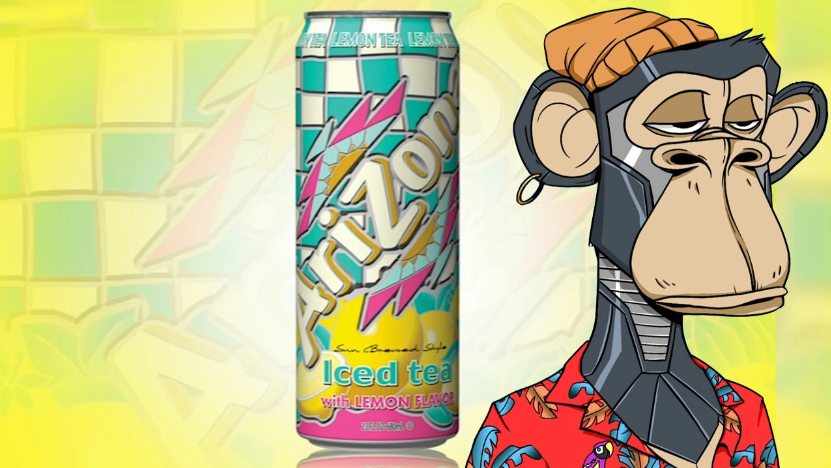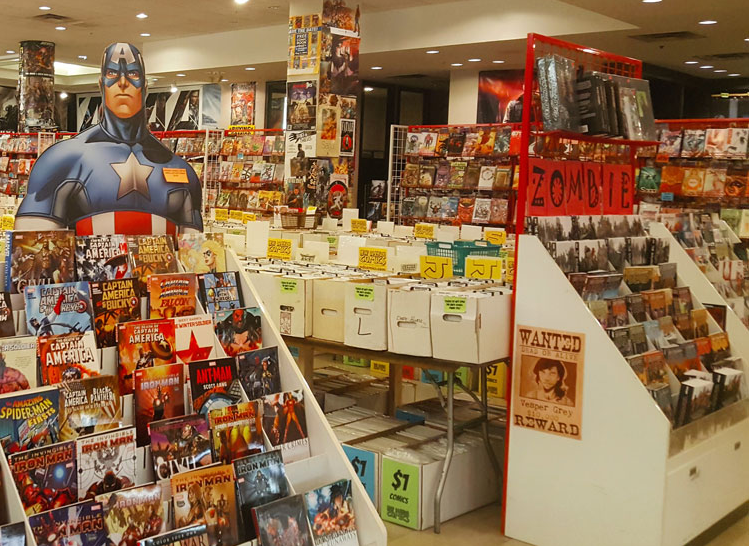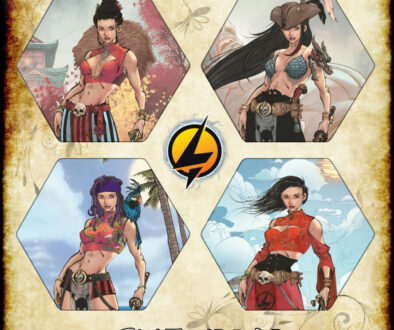Why are Comic NFTs Becoming Successful?
The advent of blockchain and the digital assets it has spawned such as cryptocurrencies and tokens has been a godsend for creators, particularly in the comic book category. Gary Vaynerchuk has in the past stated that NFTs will usher in the creation of the most significant character IPs in our era with the next superhero coming out of NFTs rather than from the traditional comic books.

Comic book NFTs are fast shifting into the mainstream of comic book market and community, attracting not only the big-ticket comic book publishers but also independent comic creators inside a decentralized and democratized marketplace. The rise of NFTs, and the platform and community it has created, are further fostering the growth of the comic book market segment.
Both creators and artists are minting a fortune selling everything from limited-issue digitized comic books to comic book strips, comic book characters, and even physical comic books that are somehow linked to the digital tokens, the so-called phygital products.
Non-fungible tokens are overcoming the limitations of traditional comic books by bestowing validity and ownership to digital art. Owners and buyers of NFT comics are able to easily verify the authenticity of the digital art or comic book on the blockchain with relative ease. This benefits both creators and comic book collectors. As a collector, you can be sure you are paying for a genuine keepsake while creators and publishers are finally able to rein in piracy and the selling of duplicates which for decades skimmed off their revenues.
The Comic Art Boom of the 1990s
This is not the first time that comic books and comic characters are attracting a frenzy of interest, not just in the comic art fandom but also in the mainstream normie world who see comics, not for their intrinsic entertainment value but as an investment vehicle.

In the 1980s, long before the idea of NFTs was even conceived, comic books and associated artwork saw something of the speculator bubble we are currently seeing with nonfungible tokens. Many Baby Boomers, who were now approaching middle age, had grown up reading comic books and loving the comic book characters and began buying up comic books as collector’s items which caused a sprawl of comic book stores across the US. There also sprouted a comic genre that catered to adult interests and sensibilities and not just to kids.
Instead of being disposable pieces of popular culture, comic books began to evolve into collectibles. They became a cult item and the buyers were no longer kids but adults with deep pockets. This resurgence in demand prompted comic book publishers to create something similar to what we are currently seeing with the comic book NFTs. They decided to pack more value into the comic books and also started introducing rarity into the comic book niche by publishing “limited-edition” releases that fetched a premium. All this was geared tat feeding the frenzy and maximizing on the revenues.
Like with current NFTs, the resurgence was also turbocharged by the entry of auction houses into the fray. Many limited edition and special editions were auctioned for a premium. The growing interest and rarity aspect of some of the comic book releases drove the prices of comics from a few hundred dollars to tens of thousands of dollars. People began to regard comic books not just as a popular culture item but as a rare investment item for which they were willing to fork out tens of thousands of dollars. Comic books that were sold for a few hundred dollars in the 1970s ended up fetching thousands of dollars in the 1980s in auction houses such as Christie’s and Sotheby’s.
The comic boom of the 1990s saw both vintage and recent comics appreciate in value and as their value rose exponentially, they attracted users who saw them merely as investment items and not as prized pieces of art and IP. Many buyers in the 1980s and 1990s purchased multiple copies of comic books which they neatly tucked away for future resale. This was perhaps its Achille’s heel as the comic books eventually didn’t provide a store of value. They could be duplicated, traceability wasn’t even a question and the technology of the time didn’t allow publishers to incorporate new utility into comic books.
Beyond the new possibilities enabled by blockchain technology, NFT comic book creators of today appear to have learned lessons from the comic boom and burst of the 1980s and 1990s.
Firstly, they are building a community and ecosystem around their comic book and comic art tokens. Buyers are acquiring not just the blockchain-linked digital creations and even a physical replica of the product but the NFT also comes with extra perks such as exclusive membership into private fan clubs, events, and much more. In the future, these NFTs will be linked to experiences in the metaverse, something that will give comic book NFTs an even greater value proposition. These NFT comics are, as a result, attracting a hardcore fanbase, and not merely detached speculators like in the 90s. They also provide collectors and speculators a better store of value than old paper comic books.
Artists and Creators Take Centerstage in Comic NFTs
Comic book artists, illustrators, and creators have traditionally been disposable for comic book companies. They have been merely cogs in the machinery powering the comic book industry who can easily be replaced. Non-fungible tokens are democratizing and evening out the playing field, putting artists on the same pedestal as revered publishing companies. Comic creatives are now able to generate millions of dollars by using their talents to create new comic art for web3.
In fact, many comic creatives from the 90s era, who were past their use by date in the traditional comics industry, are finding their skills and body of work are in high demand in the NFT era and are being sought after by NFT production studios. Artists such as Rob Liefeld, Jim Valentino, Erik Larsen, and others are the new rock stars in the metaverse age.
Besides, the discourse around NFTs, under the shadow of the decentralized blockchain environment and free from the tethers of centralized controls, gives digital artists greater latitude for self-expression. Many of the leading NFT studios are also emphasizing the respect they give digital artists, a welcome change from the comic book publishing sweatshops of yesteryear. In the NFT era, comic book creators find themselves with more power in their hands. They are seen as more than just a cog in the wheel. They are seen as integral and indispensable to the market and ecosystem. Without their talents, there would be no comic NFTs.
NFTs Have Engineered Scarcity into the Digital Comic Book Ecosystem
The success of comic book NFTs is also down to the fact that technologies like blockchain and smart contracts enable creators to engineer scarcity into their products.
In the 1990s, comic book publishers and dealers struggled with the issue of scarcity (which ultimately generates value in a collector’s item). Because the popular audience defined the material in comic books for decades, it was almost impossible to create rarity for such a commodity. The aim was to ship the comic book issues to as many readers as possible. In the 1930s and 1940s, most comic books would actually end up in the trash bin once they had been read. Only a few people kept pristine copies of comic books from that era.
Comic book publishers in the 1980s and 1990s also grappled with the issue of rarity which they needed to create in order to feed the speculator mania of the time. One way of engineering scarcity in a popular culture product like a comic book was by creating novelty issues using lithograph prints, variant covers, die-cut covers, or glow-in-the-dark covers and then inflating prices to make them novelty products. The rarity aspect was defined by novelty covers, the marketing, and the aura surrounding the issues and the pricing.
Besides, the first issues and first appearances of comic books have traditionally been valuable and are prized by the comic book community. Publishers started hyping this by creating issue #1s of comic books with unique covers. First issues were also accompanied by wide publicity thereby driving up the value of the comic book.
This hype and perceived value roped in many people, including those who didn’t have any interest in comics as comics. The books were purchased, not to be read and enjoyed, but to be stashed away in pristine shape for future resale. The gold rush of the past decades proved unsustainable as the comic books were collected and owned by almost everyone and their values crashed and stayed down for a decade.
The crash reverberated across the entire comic book ecosystem. Everyone lost, from collectors to the many comic book stores that had sprung up in neighborhoods across the US. 90% of the comic book stores collapsed in the mid-90s and some publishers even filed for bankruptcy. The crash and subsequent decline even affected the quality of comic output in recent years. There has been a dearth of new character creation and a fall in the quality of the storytelling. Many of the crossovers that came out to try and keep the sales afloat never quite took root and failed to stem the decline.
NFTs to the Rescue
With comic NFTs, there is a real chance for a revival of the 80s and 90s era comic boom. NFTs solve many of the issues that plagued the comic book industry and led to its rot such as scarcity, proof of authenticity, utility and they even put artists center stage, thereby unleashing a wellspring of talent. This will likely create the biggest character creation in the comic genre in generations. As GaryVee has stated, the next Batman and Superman in the next decades will undoubtedly be created in NFTs.
NFTs are also catering to a different demographic from the loaded Baby Boomers of the 80s and 90s.
The current NFT and crypto boom is fueled by the emergence of digital natives who have different concept ownership and are also genuinely drawn to meme-y stuff. The current digital native is willing to spend money on non-tangible stuff such as land in the metaverse, virtual shoes and clothing, and so forth and prize them as much as they do the real stuff.
However, it’s hard to ignore that the current NFT acquisition frenzy is also fueled by desperate investors looking for a quick buck who see NFTs as high-risk, high-reward assets with potentially very high returns. This has been fueled further by reports of NFTs selling for thousands and even millions of dollars. In a way, it mirrors the 1990s comic book craze when investors purchased boxes of comic books and stashed them with the hope these appreciating in value and fetching a premium in the future.
We will likely see the same trends with NFT comics but more broadly, the comic industry as a whole will benefit from the many advantages available on the new platform.

